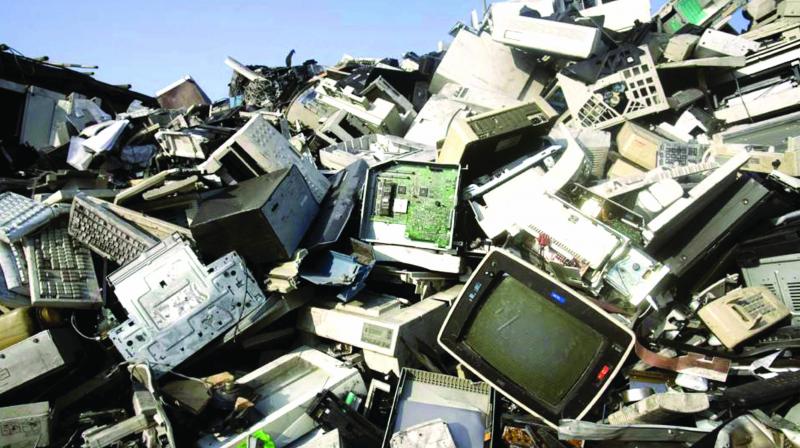Think of a life without electronics. Can you even dare to live one? Unfathomable.
From the entertainment essential television to washing machines which supports daily chores, from the fridge which chills up food to the induction stoves which brings up piping hot food and the significant asset the smartphones and the batteries which act as the powerhouse for many of gadgets end up as E-waste. As October 14 is observed as International E-waste day, let’s know more about the toxic effect of e-waste on our environment.
E-waste or electronic waste enters into waste bodies from increasing the height of landfills. The reason for increasing E-waste is not the only end of products life but also the advancement of technology.
People’s mindset focuses only on having the improved version of gadgets and appliances at home, many of us are not even aware and don’t care about what happened to the E-waste.
E-waste is the kind of waste which is itself the “gold of landfills” because most of the E-waste can be recycled and reused. E-waste contains a lot of metals such as copper, aluminium, silver and gold!
According to the e-waste management rules 2016, the pollution control boards provided a list of authorized e-waste dismantling units, authorized e-waste recyclers and authorized e-waste refurbishers in their respective states. It was listed out to help the people to connect to the government authorized e-waste services.
The most significant NO on E-waste dumping is that it not only contains precious metals but also toxic heavy metals such as chromium, lead, mercury, cadmium, etc., which is the reason. E-waste falls under the hazardous waste category. Dumping can lead to leaching of toxic elements into the ground, which depletes the quality of groundwater.
We ignore the vital sign called “no trash” present on various gadgets and appliances we use, which means it should not be disposed off with standard garbage. E-waste should be given special care, and source segregation is the best and easy way to avoid it being mixed with municipal solid waste.
UN’s Global E-waste Monitor 2020 showed a shocking report on 53.6 million metric tonnes of E-waste being generated globally in 2019. The essential economic loss is more than 80% of these waste is not recycled, which means the precious gold, silver and copper are just dumped into sand or burned into ashes! Rather than the western countries like America and European nations, Asia produced a considerable volume of E-waste.
Government has made, “Extended Producer Responsibility” into action. So it is our responsibility to make sure the E-wastes reach the producer or the authorized personnel by our government.
It’s never too late to start something good. Be cautious and considerate of what all we waste.
Written by: Manju Pargavi

